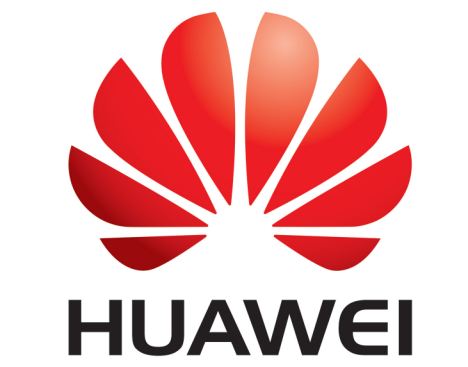(Editor’s Note: This is a reprint from an article that appeared last December 29, 2021 in the online news site of ‘Russia Times’(RT) originally titled, ‘The Chinese tech giant America tried to crush rises again.’ We are reprinting the article due to its relevance. The failed effort by US Imperialism to coerced Huawei into submission is ‘historic’ as it would be the first time in the world’s modern business history that America failed to use its awesome power to turn another successful foreign company into a mere appendage of its business and economic elite. As revealed by one of America’s victims, Frederic Pierucci formerly a top executive of France’s leading energy company, ‘Alstom,’ the US Government has no qualms in using coercive methods in favor of its own business elite. In his book, ‘The American Trap’ first published in 2019, America has forced some 30 global corporations to paid hundreds of millions of US dollars for purportedly violating its ‘Foreign Corrupt Practices Act (FCPA). See also Pinoy Exposé article of October 18, 2021. Not included in Pierruci’s list is ‘Toshiba’ of Japan, whose downward spiral from being the world’s leading technology company in the 1980s into just another ‘ordinary’ company came after being targeted by the United States. The fate of Toshiba, Alstom and yes, Huawei, under America’s criminal acts against legitimate businesses are another slap in America’s claim to a ‘rules-based global order.’ This article has been abridged due to space constraint but its entirety can be viewed here).
THERE has been no other technology firm that has symbolized and encapsulated the dynamics of the emerging struggle between China and the United States the way Huawei has. The Shenzhen telecommunications firm has been one of China’s leading technology giants, and was subjected in 2019-2020 to a relentless campaign by the United States, which sought to destroy it through a variety of means.
From blocking exports to it, isolating it from global chipmakers, forcing allies to ban its participation in their 5G networks, imposing criminal charges against it and kidnapping one of its senior executives, America’s campaign against the firm was relentless across the board and bruising to its commercial fortunes.
In 2021, Huawei’s sales ultimately tumbled because it was forced to sell off its popular smartphone brand, Honor, whilst also losing chip capacity, which severely limited its other high-end smartphone business.
The firm’s network carrier business survived, and continues to lead the world in 5G market share outside of the handful of US-aligned countries who banned it, but Huawei founder and CEO Ren Zhengfei described the situation as a fight for the company’s survival.
Huawei is now bouncing back with renewed vigor. It is not only planning big, but acting big too. The company has not accepted its fate or the vice the US has placed around it to cut it off from global chip supplies.
A story recently appeared in a series of Chinese news outlets stating that Huawei had established a new subsidiary, called Huawei Precision Manufacturing, armed with capital of 600 million yuan.
The new organization denied it would be making chips, but it has been tipped to focus on “the packaging, testing and assembling of high-end devices, modules, components in the fields of optoelectronics, wireless, digital energy, smart cars, and other terminal products” – many technologies which are associated with the chip industry.
But that isn’t all: throughout the course of 2021, Huawei has quietly attained operating stakes in several Chinese semiconductor and lithography companies, essential root technologies which the US has sought to blacklist the firm from.
There are also persistent reports that the company will open its own “wafer foundry” in Wuhan in 2022… It is creating an entire self-owned supply chain for itself, outside of America’s clutches…
“… Washington’s primary weapon against Chinese companies has been its commerce department’s “entity list” – a prohibition which seeks to block the export of sensitive or critical technologies to the designated target.
Both the Biden and Trump administrations have been obsessed with it, adding an ever-growing list of Chinese technology companies across all critical sectors, such as telecommunications, artificial intelligence, aerospace, biotechnology and semiconductor firms…
“… While these firms could source supplies from outside of the US, Washington brought in an additional sanction, for Huawei in particular, entitled ‘The Foreign Direct Product Rule,’ banning companies who use any American semiconductor patents from supplying Huawei. Hence the firm’s particularly difficult situation…
… Huawei should not be underestimated, as it has one of the highest research and development budgets on the planet, the fifth-highest worldwide as a company, which last year alone exceeded $20 billion.
In fact, this R&D budget alone as a company exceeds that of entire countries, such as Australia… Instead of killing the company, US sanctions against it have simply made it fire all guns blazing towards breaking the technology stranglehold placed on it…
“… Huawei appears to be not only preparing to create new chips in the long run, but potentially semiconductor-related equipment too.
It serves as a reminder that it is indeed a company of strategic importance in China, and that might just be why the US has gone after it so aggressively.
As such an innovative firm, Huawei won’t play by the constraints the US has set for it, but is ultimately looking towards changing the game by inventing something new and forcing its way out.
In trying to kill the ‘monster,’ America has created a bigger, stronger one; Washington’s politicians may not have realized their mistake yet, but when they do, it will hit them hard.



